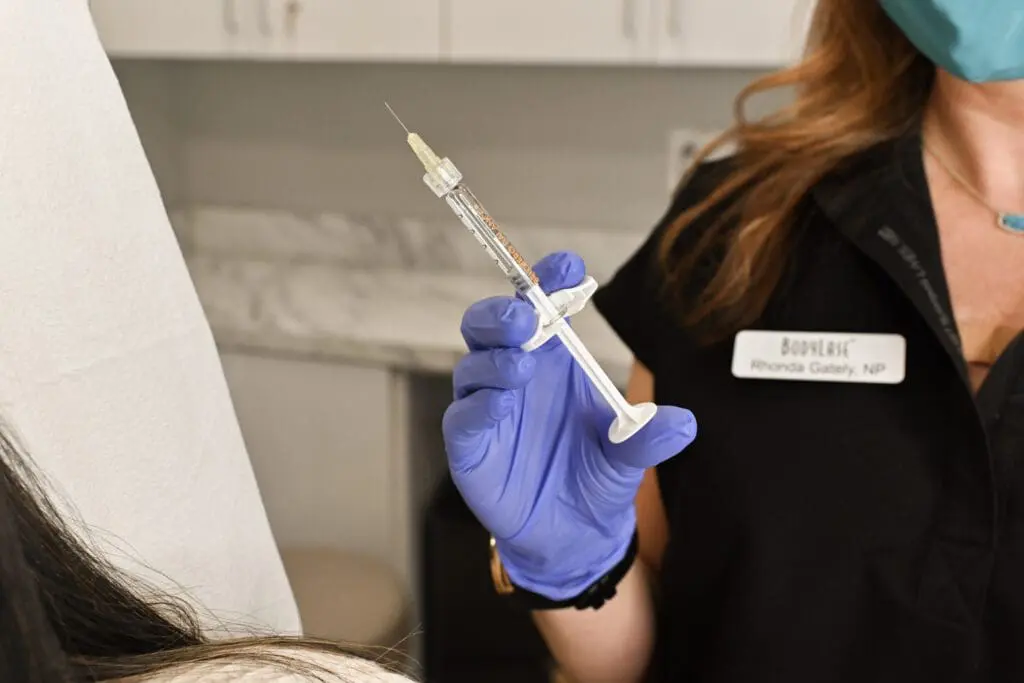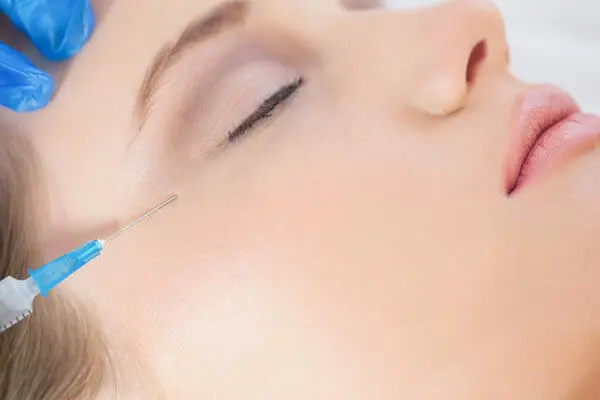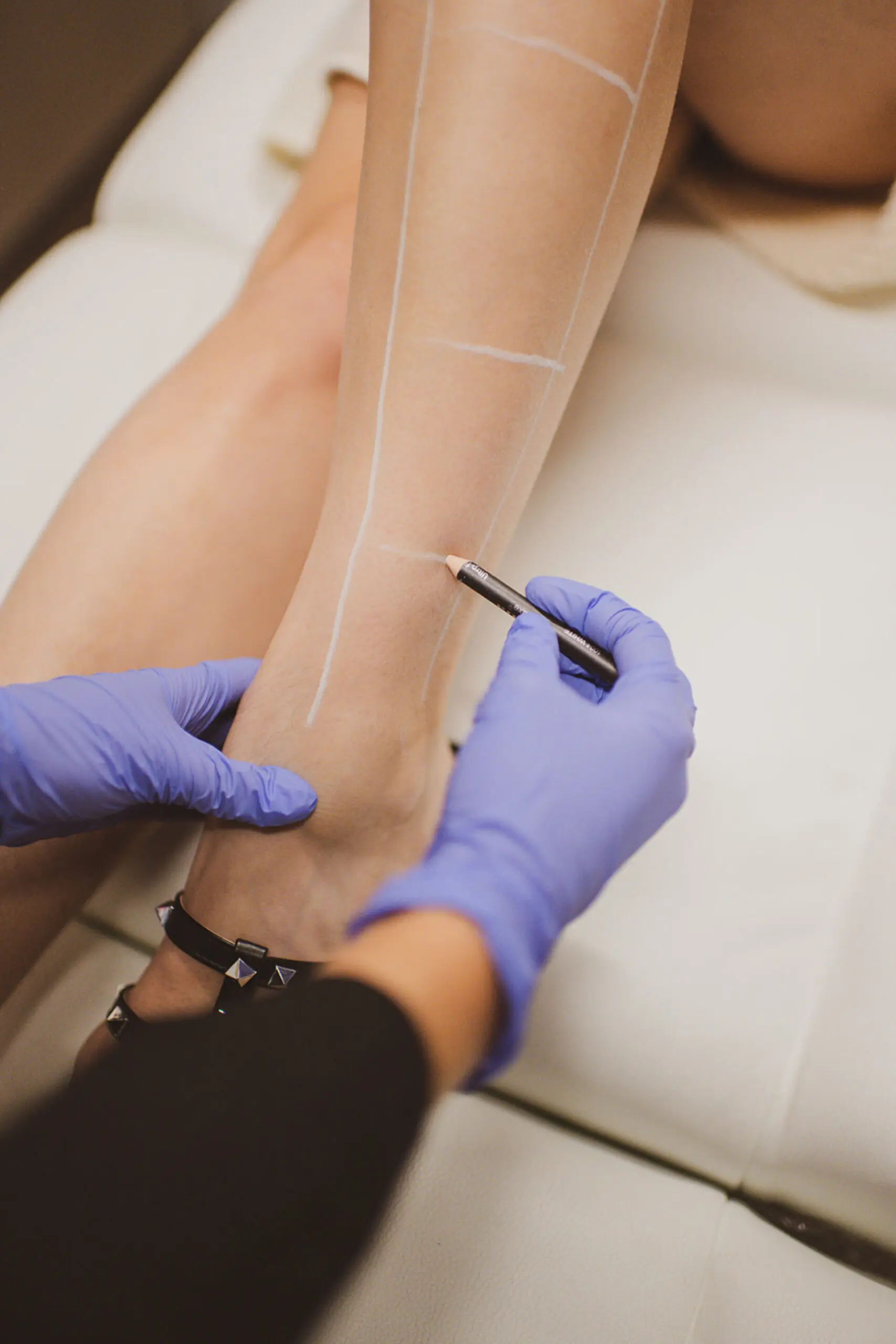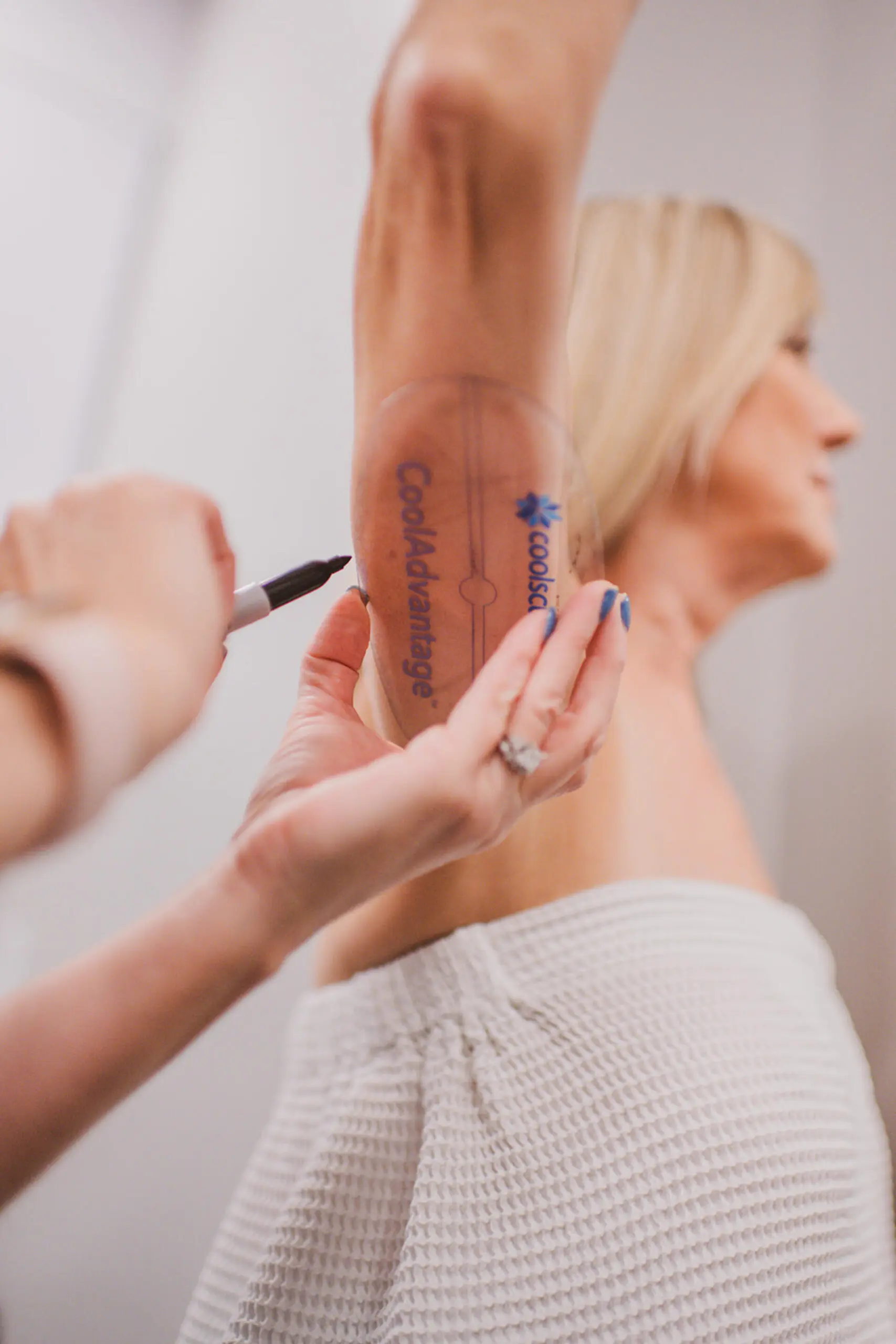
Reviewed by Netu Kaur, AGNP-C BodyLase Aesthethic Injector
Cosmetic injectables have revolutionized anti-aging treatments, offering millions of people non-surgical options to regain their youthful appearance with minimal downtime. Two names have gained prominence in this conversation: Dysport® and Botox®.
While both treatments harness neurotoxins to temporarily relax facial muscles and reduce the appearance of fine lines, each comes with unique considerations based on your beauty and wellness goals.
Having trouble deciding between Botox vs Dysport? In this guide, we will break down their differences and similarities so you can make the most informed decisions along your aesthetic journey.
What is Botox?

Botox is the aesthetic industry’s pioneering injectable neurotoxin. It earned FDA clearance for temporarily improving the appearance of dynamic facial wrinkles by limiting muscle movement in targeted treatment areas. As a versatile solution for natural-looking skin rejuvenation, it smooths forehead lines, crow’s feet, and glabellar lines, the vertical “11” lines that appear between the eyebrows during facial movement.
Beyond its aesthetic applications, Botox offers therapeutic benefits for conditions including hyperhidrosis (excessive sweating) and TMJ-related jaw tension.
With over 20 years of clinical use to back its use, Botox has a proven track record of safety and results. As the first neurotoxin approved for aesthetic use, it is an excellent option that delivers proven, reliable outcomes.
What is Dysport?
Dysport entered the global aesthetic market as a European alternative to Botox, gaining widespread use in several countries before receiving FDA clearance in 2009 for use in the United States.
Like Botox, Dysport contains a controlled neurotoxin, but with a different formulation that creates a specific diffusion pattern when injected into the treatment area. Dysport is only approved to treat glabellar or “11 lines”, thus yielding much more limited applications than Botox. It also tends to last for a shorter duration than Botox and offers less precision in application— more on that later.
Dysport and Botox

Both Dysport and Botox are injectable neurotoxins derived from botulinum type A. They’re designed to temporarily block nerve signals to muscles, reducing muscle activity and smoothing the skin’s appearance.
When injected into the targeted facial muscle, both treatments prevent the release of acetylcholine, the neurotransmitter responsible for muscle contractions. This process relaxes dynamic wrinkles caused by repetitive expressions.
Key Differences Between Dysport and Botox
Though they share the same core active ingredient, Botox and Dysport differ in molecular structure and formulation. This influences factors such as onset time, diffusion patterns, and potentially the duration of results.
Let’s take a closer look.
Formulation and Spread
Dysport and Botox differ significantly in how they disperse once injected into treatment areas.
- Dysport has a more diffuse spread pattern, which can potentially cause unwanted muscle weakness in areas surrounding the injection site, especially if it is not carefully administered.
- On the other hand, Botox features minimal diffusion at the injection site, providing exceptional precision where targeted control is desired.
Onset Time
Dysport recipients typically notice initial improvements within 2-3 days of treatment.
Botox generally takes 3-5 days for results to become noticeable, with full results typically developing over 7-14 days.
Although both treatments ultimately deliver outcomes within two weeks of treatment, the difference in onset times may be relevant for individuals seeking results for an upcoming event or special occasion.
However, those who opt for Dysport may pay a price for quick results. While Botox may have a slightly longer onset time, it tends to last longer, look more natural, and yield more precise results.
Longevity of Results
“How long does Dysport last vs Botox?”
This question frequently arises during consultations, as treatment longevity significantly impacts client scheduling.
Botox results typically maintain peak effectiveness for 3-4 months before gradually diminishing. Depending on individual metabolism, treatment area, and dosage, some clients may experience benefits for up to 6 months.
Some studies suggest that Dysport may metabolize slightly faster than Botox, potentially requiring more frequent maintenance appointments.
Several factors influence how long results last with either product, including:
- The individual’s metabolic rate
- Muscle strength in the treated area
- The specific area being treated
- The number of units administered
- Whether the individual is receiving regular maintenance treatments
Units and Dosage
Another key difference when discussing Dysport vs Botox is units and dosage.
Due to their different protein concentrations, approximately 2-3 units of Dysport are required to achieve the same muscle-relaxing effect as 1 unit of Botox. This distinction explains why clients might receive 50 units of Botox for a treatment area but 150 units of Dysport for the same region with similar results.
The average number of Botox units typically follows established guidelines based on the treatment area:
- approximately 20 units for the “11s” between the eyebrows
- 20 units for horizontal forehead lines
- 15 units for crow’s feet around both eyes
The average number of Dysport units needed to achieve similar results:
- approximately 60 units for the “11’s” between the eyebrows
- 60 units for horizontal forehead lines
- 45 units for crow’s feet around both eyes
Which Is Better: Botox or Dysport?
When evaluating Botox vs. Dysport, the “better” option ultimately depends on your specific aesthetic goals and facial anatomy.
Botox often provides advantages with targeted action and minimal diffusion properties for smaller, precise treatment areas, such as fine crow’s feet or subtle lip lines.
BodyLase exclusively offers Botox treatments because of its exceptional reliability, predictable results, and versatility across numerous applications. Botox is the gold standard in injectable aesthetic treatments, with decades of successful clinical use in preventing and repairing the signs of aging.
What to Expect with Botox Treatments
At BodyLase, your Botox experience begins with a consultation. During this visit, our skilled providers assess your facial anatomy, discuss your desired outcomes, and develop a customized treatment plan for optimal results.
The injection process itself is remarkably quick, typically 15-20 minutes. It features ultra-fine needles that cause minimal discomfort. Many clients describe the sensation as brief pinches that subside almost immediately after each injection. Following treatment, you can immediately return to most regular activities with minimal restrictions (primarily avoiding strenuous exercise, facial massages, or lying face-down for 4-6 hours).
With no significant downtime, Botox has earned its reputation as a “lunchtime procedure” that integrates seamlessly into busy schedules.
Schedule a Med Spa Consultation in Raleigh, Cary, Chapel Hill, or Clayton
When it comes to Dysport vs Botox, BodyLase’s medical professionals have found Botox provides the precision and noticeable results that best align with our commitment to delivering optimal aesthetic outcomes for our clients.
Request your consultation today. Our staff is excited to help you find a safe and effective Botox treatment personalized for your specific needs.


